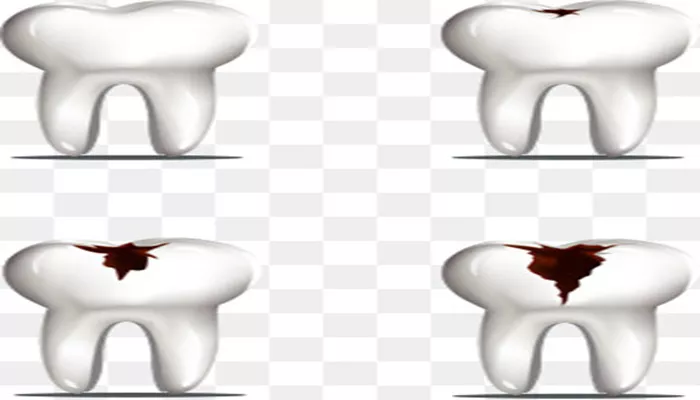Dental cavities, also known as caries or tooth decay, are common oral health issues. To repair these damaged areas, dentists often use fillings. This article will provide a detailed introduction to the materials commonly used for dental cavity fillings, adopting a subtitled and popular science style to make the information easier to understand.
Types of Dental Cavity Fillings and Their Materials
1. Amalgam Fillings (Silver Fillings)
Material Composition
Mercury: Amalgam fillings primarily consist of a mixture of metals, with mercury being the key component.
Other Metals: These include silver, tin, copper, and sometimes zinc.
Properties and Advantages
Durability: Amalgam fillings are highly durable and can withstand the chewing forces in the mouth.
Affordability: They are typically less expensive than other types of fillings.
Considerations
Mercury Content: Although amalgam has been used safely for decades, concerns about the mercury content have led some patients to seek alternative options.
Appearance: Amalgam fillings are noticeable due to their silver color, which may not be aesthetically pleasing for some patients.
2. Composite Resin Fillings (White Fillings)
Material Composition
Plastic Resins: Composite fillings are made from a mixture of plastic resins and glass particles.
Properties and Advantages
Aesthetics: Composite fillings can be matched to the natural color of teeth, making them less noticeable.
Bonding: They bond directly to the tooth structure, which can help preserve more of the natural tooth.
Considerations
Wear and Tear: Composite fillings may wear down over time and may require replacement more frequently than amalgam fillings.
Technique Sensitivity: Placement requires a higher level of skill and precision from the dentist to ensure proper bonding and aesthetics.
3. Ceramic Fillings (Porcelain or Inlays/Onlays)
Material Composition
Porcelain or Ceramic Materials: These fillings are made from porcelain or other ceramic materials.
Properties and Advantages
Aesthetics: Ceramic fillings offer the best color match to natural teeth, making them ideal for front teeth or areas where aesthetics are a priority.
Strength: They are strong and durable, capable of withstanding chewing forces.
Considerations
Placement Process: Ceramic fillings often require two visits to the dentist: one for preparation and impression-taking, and another for placement.
Cost: They are typically more expensive than composite or amalgam fillings.
4. Glass Ionomer Fillings
Material Composition
Glass and Polyalkenoic Acid: Glass ionomer fillings are made from a combination of glass particles and polyalkenoic acid.
Properties and Advantages
Fluoride Release: These fillings release fluoride, which can help prevent further decay.
Adhesion: They bond well to the tooth surface and can be used in areas where there is minimal tooth structure left.
Considerations
Wear and Strength: Glass ionomer fillings are not as strong as composite or ceramic fillings and may wear down more quickly.
Aesthetics: They may not match the natural tooth color as closely as composite fillings.
Selection of Filling Materials
When choosing the appropriate filling material, dentists consider several factors:
Location of the Cavity: The location of the cavity on the tooth (front or back) can influence the choice of filling material.
Front teeth often require more aesthetically pleasing options like composite or ceramic fillings.
Severity of Decay: The extent of decay and the amount of tooth structure remaining will affect the type of filling used. More extensive decay may require a crown or other restoration.
Patient Preferences: Patient preferences for aesthetics, cost, and durability play a significant role in the selection of filling materials.
Dental Health and Habits: The patient’s overall dental health, oral hygiene habits, and bite forces can also impact the choice of filling material.
The Process of Filling Cavities
The process of filling a cavity typically involves the following steps:
Preparation: The dentist will first remove the decayed portion of the tooth using a drill or laser.
Shaping: The area will be shaped to prepare it for the filling material.
Placement: The chosen filling material will be placed in the cavity.
Hardening: For composite fillings, a light may be used to harden the material. Ceramic fillings may require additional curing or setting processes.
Adjustment and Polishing: The filling will be adjusted for comfort and bite, and then polished to blend with the natural tooth surface.
Importance of Preventive Care
While fillings are an effective way to repair damaged teeth, preventive care is crucial in maintaining oral health and avoiding the need for fillings. This includes:
Brushing and Flossing: Regular brushing and flossing help remove plaque and food particles that can lead to decay.
Regular Dental Check-ups: Visiting the dentist regularly for check-ups and cleanings can help catch problems early and prevent them from becoming more serious.
Healthy Diet: A balanced diet that limits sugary snacks and drinks can help reduce the risk of decay.
Fluoride Use: Using fluoride toothpaste, rinses, or treatments can help strengthen tooth enamel and protect against decay.
Conclusion
Dental cavity fillings are an essential part of restoring teeth damaged by decay. The choice of filling material depends on various factors, including the location of the cavity, severity of decay, patient preferences, and dental health habits. By understanding the different types of fillings and their properties, patients can make informed decisions about their oral health care. Preventive care, including regular brushing, flossing, dental check-ups, and a healthy diet, remains the best way to avoid the need for fillings and maintain a healthy smile.
Related topics:

